The most romantic castle of Scotland
"Romantic Castle" Eilen Donan.
This is how it looked like before 1912.
The island of Eileen Donan got its name from St. Donan, known as Donnan from Aig, a Celtic priest who tried to preach Christianity among the wild picts in the north-west of Scotland. It is clear that the Picts did not like it. Therefore, on the orders of the Queen of the Picts 17 on April 617, they burned him at the stake, and with him the 150 brothers of faith.
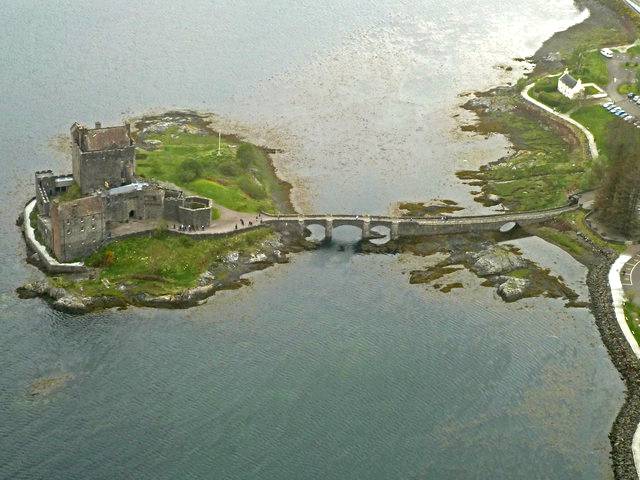
View of the castle from above. The white building in the upper right corner is a hotel where you can stay and ... admire the views of the castle from the window.
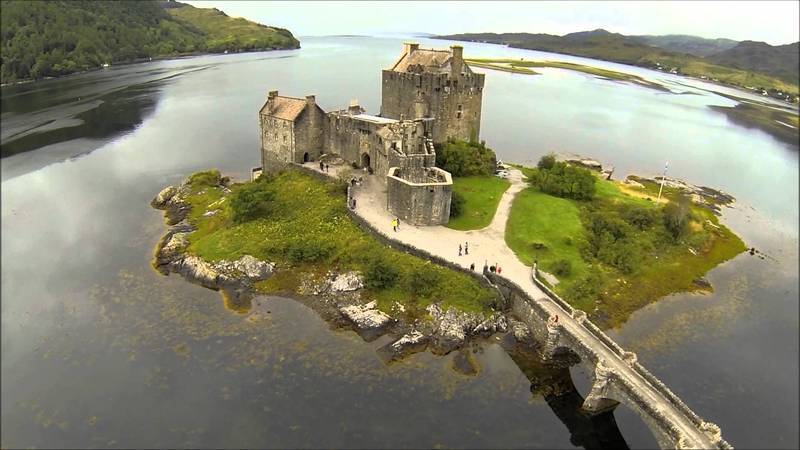
But before the bridge leading to the castle, there was not. And the question is, how was the construction materials delivered there?
Obviously, the Christian community was already established on the island, which gave it a name. Whatever it was, but at the beginning of the XII century, Alexander II (the rules of 1214 - 1249), the then king of Scotland, built a castle on it to protect against Viking attacks.
In good weather, the castle is very beautiful.
From whatever side you look, it is a very unusual, although in something traditional building.
In 1266, he was given possession of Colin Fitzgerald as a reward for defeating Haakon IV of Norway in a battle near Eilean Donan. His descendants took for themselves the typically Scottish family name McKinsey and walled most of the island. Well, in 1511, another clan settled in the castle - the MacRy clan, McKinsey's longstanding allies and the life commandants of the castle, Eilen Donan. In fact, both these families had at their disposal a completely impregnable fortress, which could only be reached by boat, which was possible, however, not always. Robert Bruce also honored him with his stay. In the winter of 1306-07. the owners of the castle gave him shelter in a difficult time for him, but, in general, his owners managed to avoid participation in the Scottish wars of independence against the British.
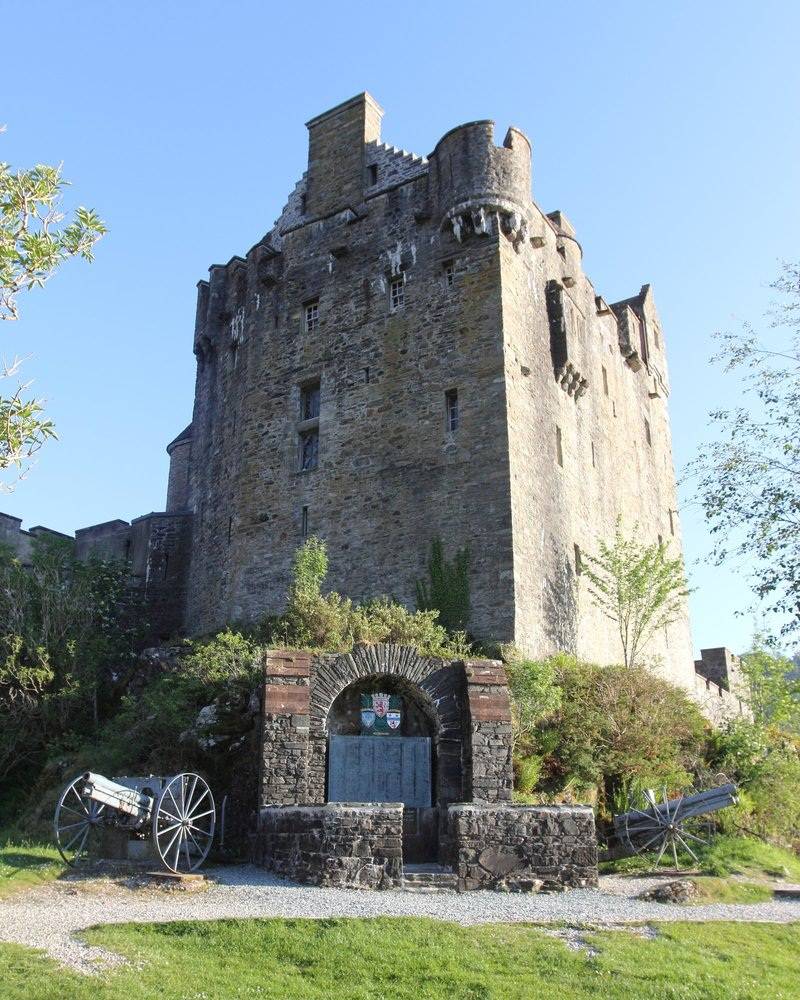
Here it is - “keep” in all its glory. Below is a memorial plaque with the names of 500 of members of the clan MacRee who died in the war.
However, Scotland has always lived "very fun" - one clan went to another, which led even to the so-called "clan wars". One ended, and immediately began another.
The coat of arms of the owners of the castle and the year of its beginning.
During this war in 1539, the MacDonald clan of Slitt attacked the castle and besieged it for a long time. The commander of the MacDonald clan was a certain Donald Gorm, who learned that the castle garrison was small. In fact, there were only three people in it at all: the recently appointed Constable Dubh Matthyson, the warden and the son of former Constable McGill-Hope, who killed several MacDonalds. The attackers managed to kill Mathieson and the warden, but the constable’s son struck Donald Gorm on the ankle with the last arrow. He, like a real Scotsman, did not pay attention to the wound and simply tore the arrow out of the wound. But at the same time the prong of the tip cut his artery to him, and he bled out in the hands of his soldiers. Those fell into despondency and ... retreated!
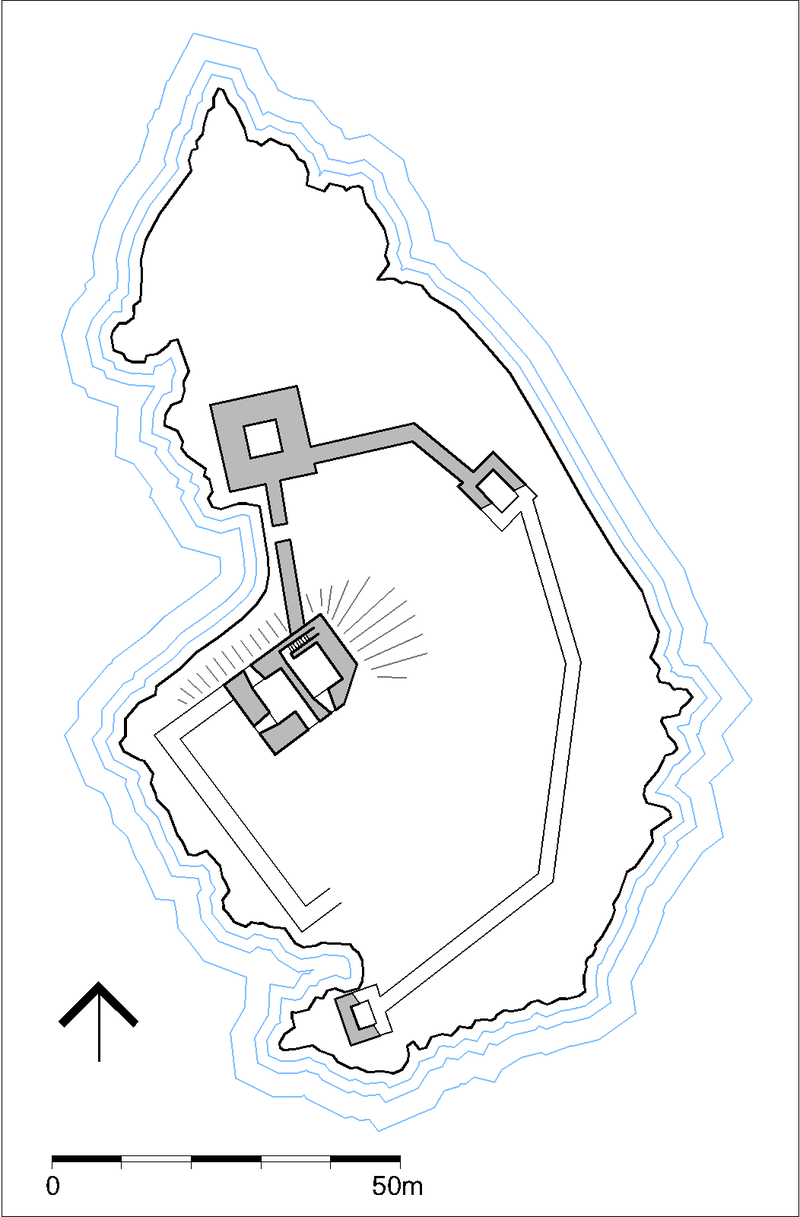
In the XIII and XIV centuries. the castle in plan looked like this.
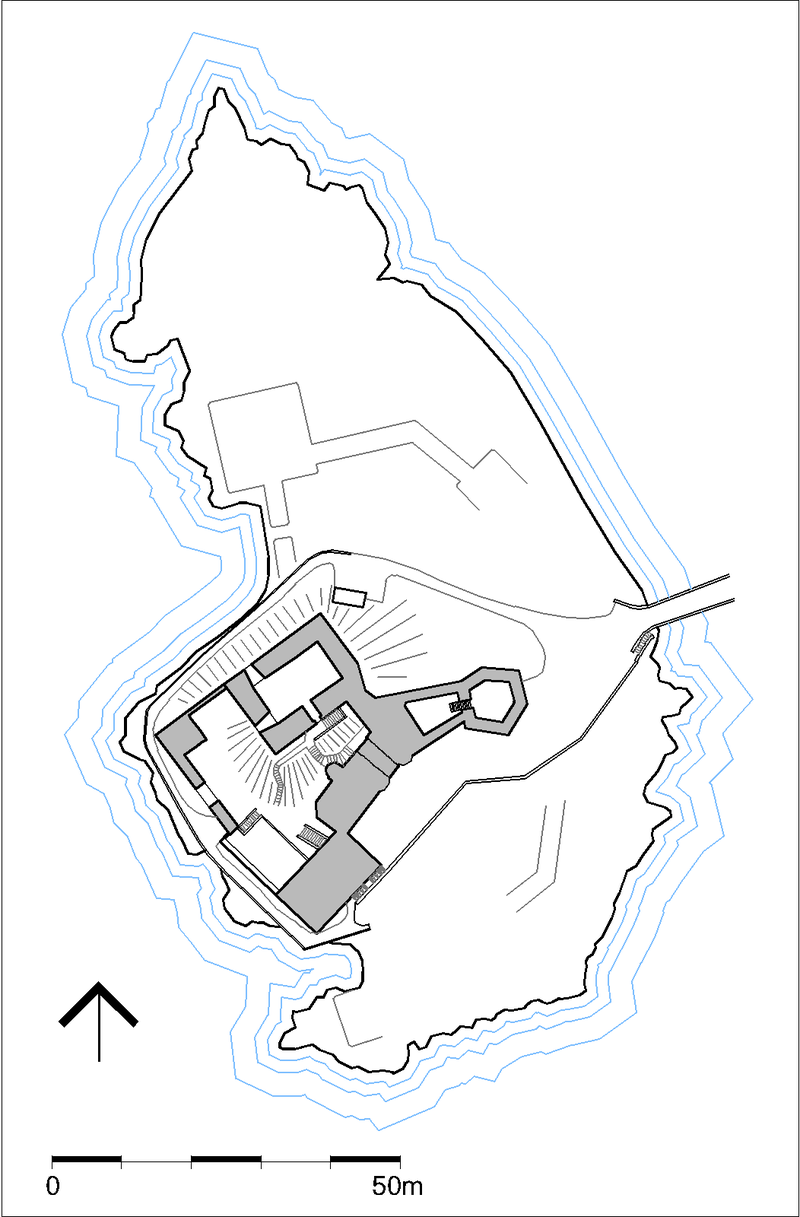
But his layout today.
In April 1719, Spanish soldiers captured the castle, trying to raise another Jacobite uprising. The Jacobites were called adherents of the English king Jacob II and his descendants, who was expelled in 1688 by the “Glorious Revolution”, and there were especially many of them in the highlands of Scotland. The Jacobites were supported by Rome, France and Spain, the latter sending both money and soldiers to Scotland, because at the same time there was a war for the Spanish inheritance. So the castle became a base of resistance. However, from May 10 to May 13, 1719 he was attacked immediately by three frigates of the Royal Naval fleet. According to entries in the ship’s magazine, the British then captured: "... an Irish captain, a Spanish lieutenant, a sergeant, one Scottish rebel and 39 Spanish soldiers, as well as 343 barrels of gunpowder and 52 barrels with musket bullets ...".
Sign In
Courtyard
Having captured the castle of Eilen Donan, the British engaged in burning several barns, where grain was kept for the soldiers, and then using the captured gunpowder they blew up the castle itself. A month later, the Spaniards were defeated in the battle of Glen Schiele, but only the picturesque ruins remained from the castle of Eilean Donan.
The cores, which the British fired at the castle.
Centuries flew over them, until, in the period from 1912 to 1932, the year, by Lieutenant Colonel John MacRee-Gilstrop, the castle was rebuilt according to old plans preserved in Edinburgh. Moreover, it was not only a reconstruction, an arched stone bridge was thrown onto the island, connecting it with the shore of the lake. In 1983, the MacRee family formed a special charitable foundation to continue the restoration of Eileen Donan Castle.
The Scots celebrate the completion of the restoration of the castle.
The rally at the memorial plaque with the names of the dead members of the clan MacRee.
Note that since the creation of the castle gradually increased in size, so that its walls began to come close to the water. But at the end of the XIV century, its area decreased by five times, as there were not enough people to defend it. Nevertheless, in the 16th century, a platform for newer and heavier guns was attached to its eastern side. The thickness of the castle walls reached 4 m, which is why in 1719, the frigates firing at it could not destroy it, which made it necessary to resort to undermining it from the inside.
To see a Scotsman with bagpipes near the castle is easier than ever. As we have a musician in the subway tunnel or underpass.
So a romantic trip to Eileen Donan Castle is a whole “expedition”, since the path to it lies across the bridge (and not one), thrown across the lake. First, after passing through the decorated gate, tourists get on a stone dam leading to the island. The bridge rests on a hexagonal building. Once there was the main entrance to Eilen Donan, since the bridge that was built only in the 20th century, in past centuries, was not yet there. The main building of the castle is the donjon or "keep", as the Scots say, built on a high point of the island, probably in the XIV century. Its dimensions are impressive: 16,5 on 12,4 meters (54 on 41 feet), with walls three meters (9,8 feet) thick. The basement with a vaulted ceiling was originally divided into two parts, with a staircase at the north wall. There were probably two more floors above it, including an attic. The tower was gable, surrounded by a passage with small turrets located at its corners.
Banquet room on the second floor.
Very unusual was the old entrance to the castle. For some reason he was in a hexagonal tower with a door, but it was arranged in such a way that there was water inside. It is believed that this tower was erected in the 16th century as a bridgehead reinforcement, and ... a water tank of 5 depth. The Guardian could easily control this path when she only removed the wooden bridge thrown over the water.
The modern entrance to the castle is located in the southern wall, and an inscription in Gaelic is made above its descending grid: “As long as MacRi is inside, the Milling Machines will never be left outside”. They made it at the time when MacRee came to Kintayl, but before that they lived on the lands of the Frazer clan, on the southern shore of Bailey Bay. Moreover, it is believed that the following inscription was made on Frazer’s castle: “While at least one Fraser is alive inside, do not stand MacRi outside.”
Relentless time and people turned many parts of the castle into ruins, so, walking through the territory of the island, you can see only the foundations of the stone walls that once walked along almost all of its coastline. The castle itself is, in fact, the whole donjon is. An exhibition of paintings and an old weapons, and there is also a lot of beautiful furniture and no less beautiful porcelain.
The second floor is reserved for the exhibition of flags, shields, family portraits and other trophies of Clan MacRee, and here you can also see a piece of hair of the rebellious Prince Karl Stewart, also known under the nickname "Handsome Prince Charlie." Wooden ceiling beams are a gift from Canadian MacRy made from first-class pine brought here to treeless terrain from British Columbia. In one of the rooms on the second floor there is also a sprawling family tree of the clan MacRee.
The interior of one of the bedrooms.
On the third floor will have to climb the stone spiral staircase. There are six bedrooms with the names of Loch Alsh, Loch Long, Eilean Donan, Ballimore, Loch Duich and Conchra. The wooden door of one of them is the exit to the castle wall. “1912” is carved on it - that is, the year of commencement of work on the restoration of the castle, as well as the names and years of life of some of its commandants.
Well, now how to do without wax figures? Well, no way!
Coming down from the wall, tourists get into the kitchen. In it, as it has now become very popular, there is an exposition with wax figures of a butler, a cook and even the mistress of the house Ella MacRi-Gilstrap during preparations for dinner around the era of the 30-s of the XX century. And very accurately recreated its entire interior, and even the food on the plates.
And this is a view of the castle from the hotel window opposite.
Near the entrance to the castle are two guns from the First World War. Why, what is the connection? And the connection is direct - here is also the honor table of the clan MacRee, which lists the dead in the years of the First World War. Including relatives of Canadians and Australians, on this board is located near 500 names. Well, this castle is also often filmed in the cinema, but that’s already completely different. story.
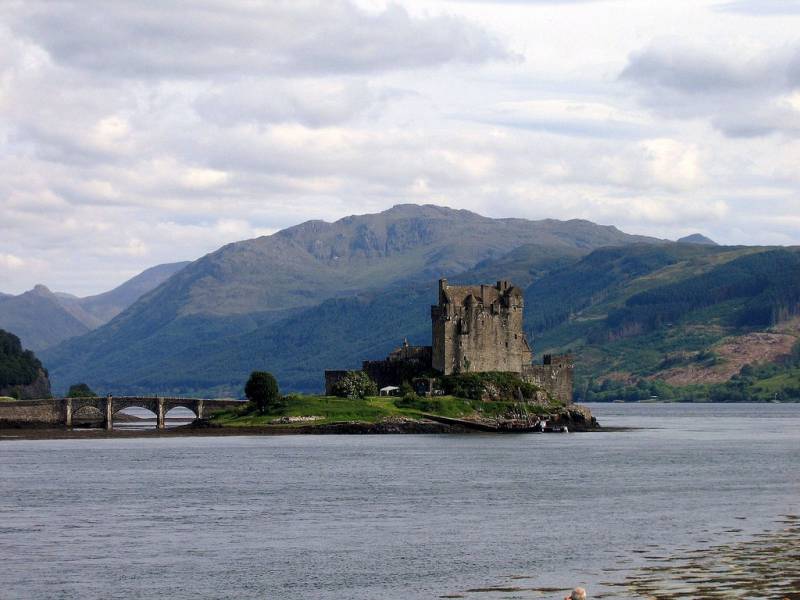
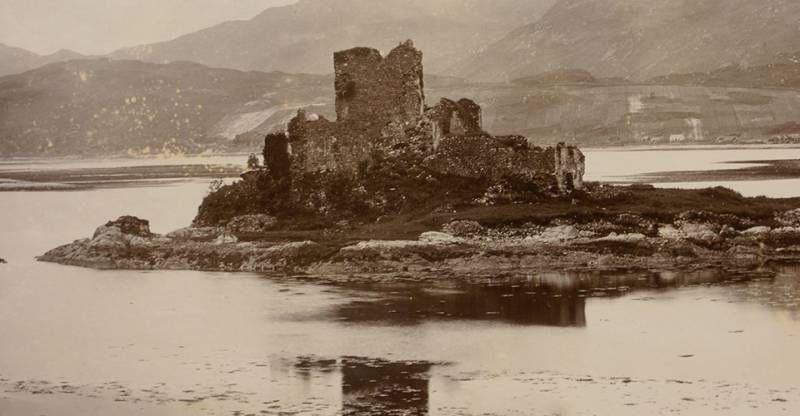
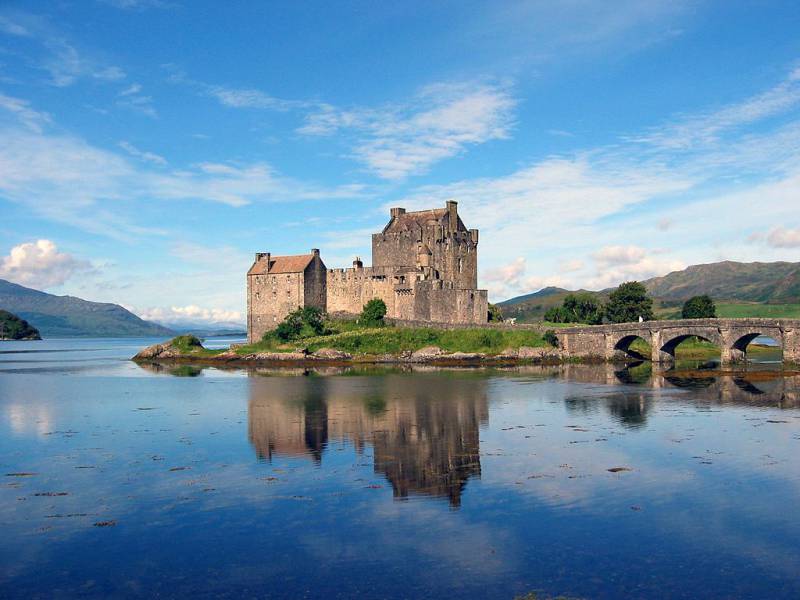
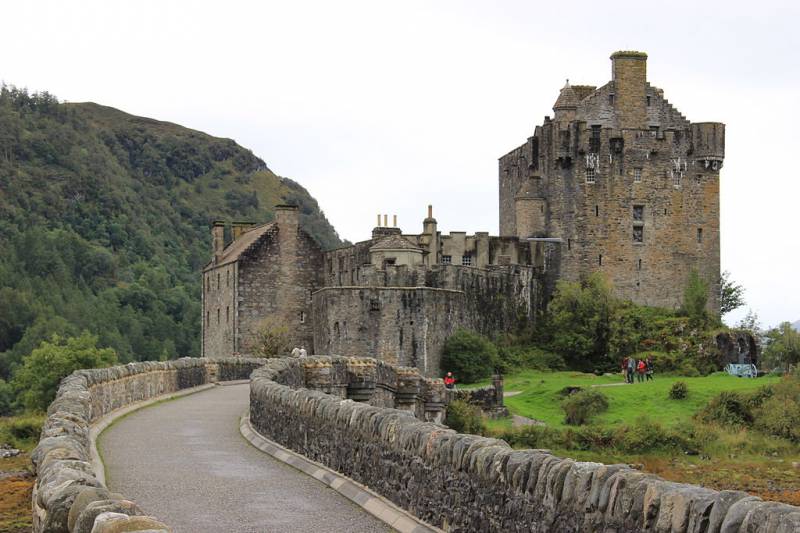
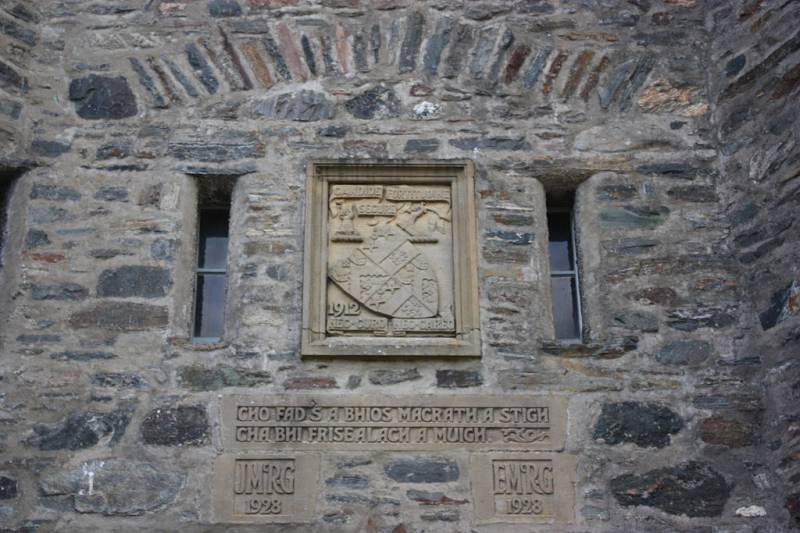
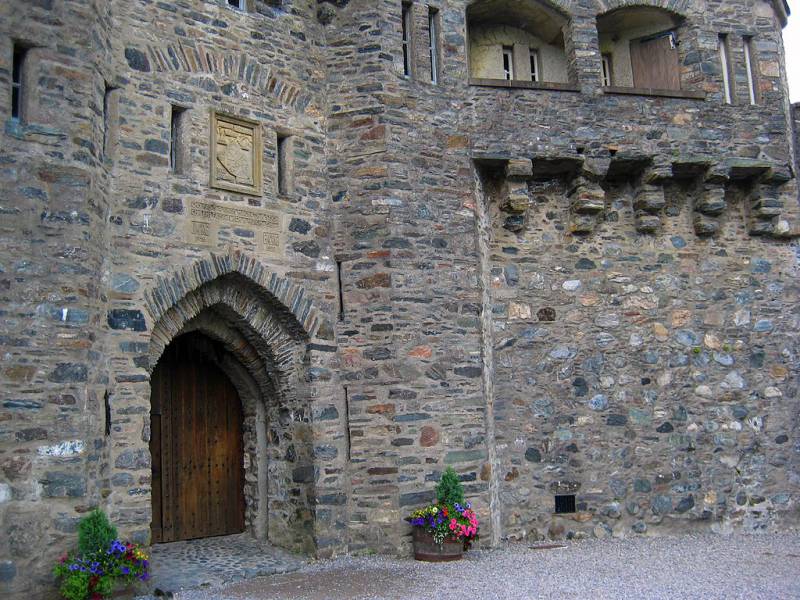
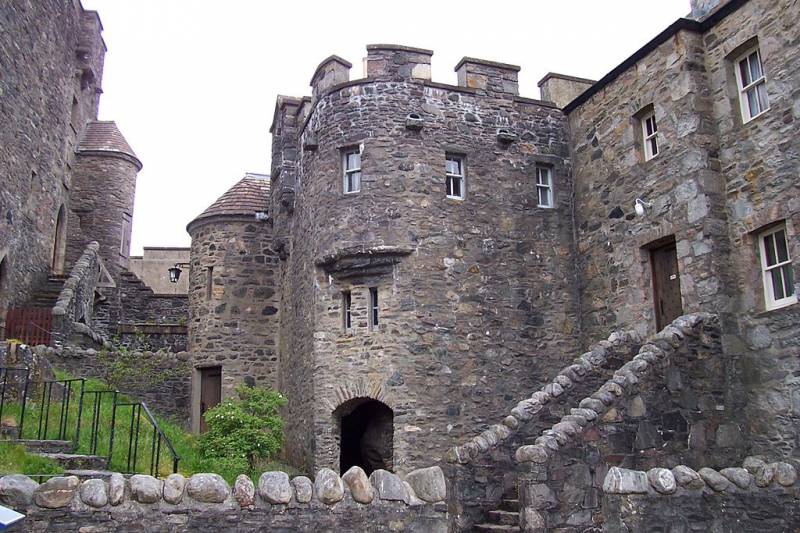
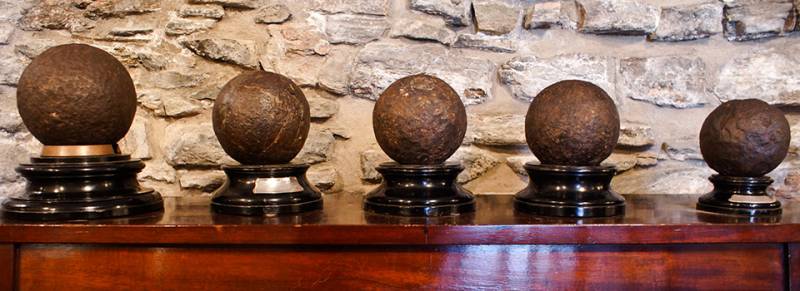
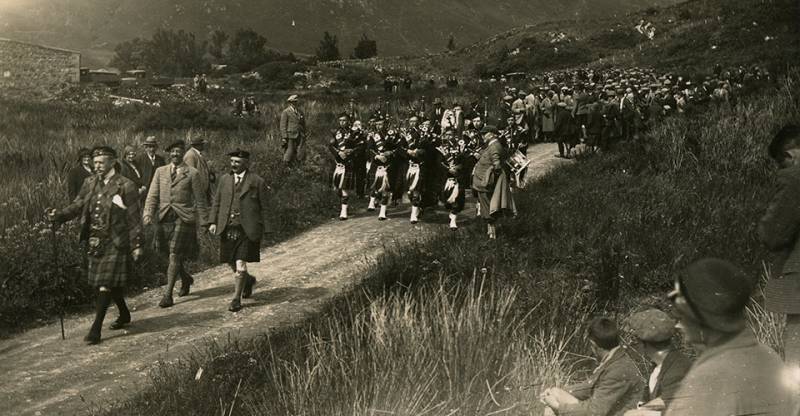
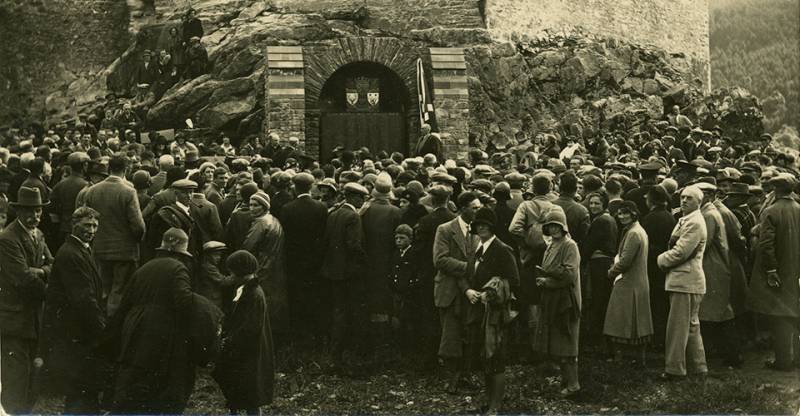
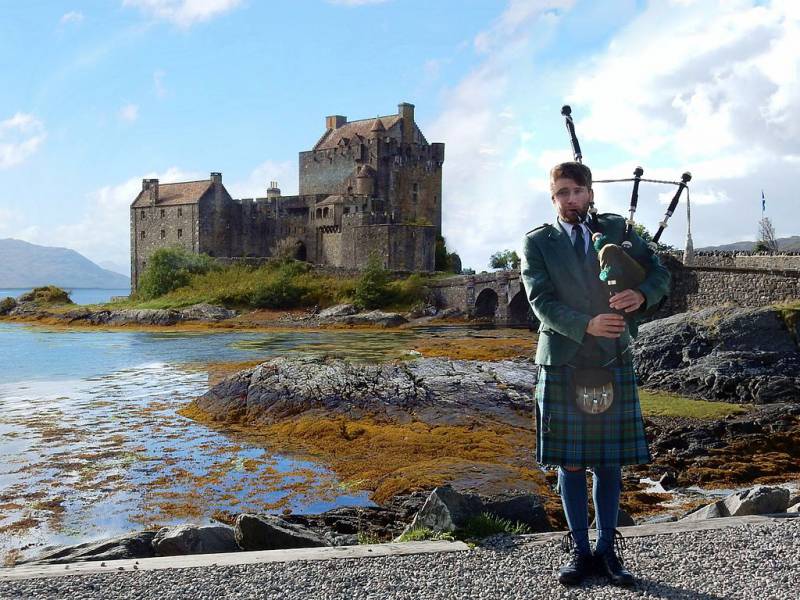
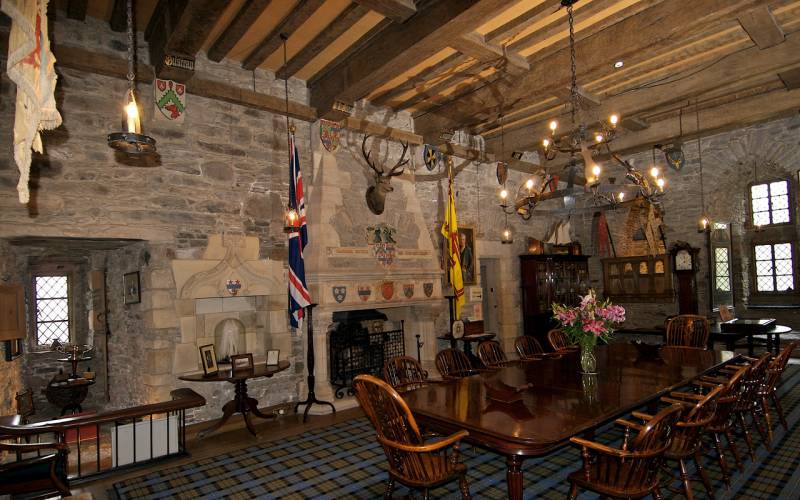
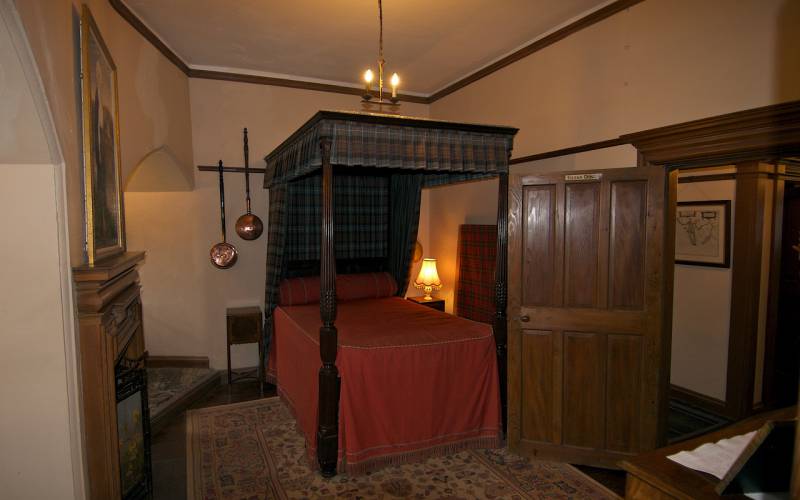
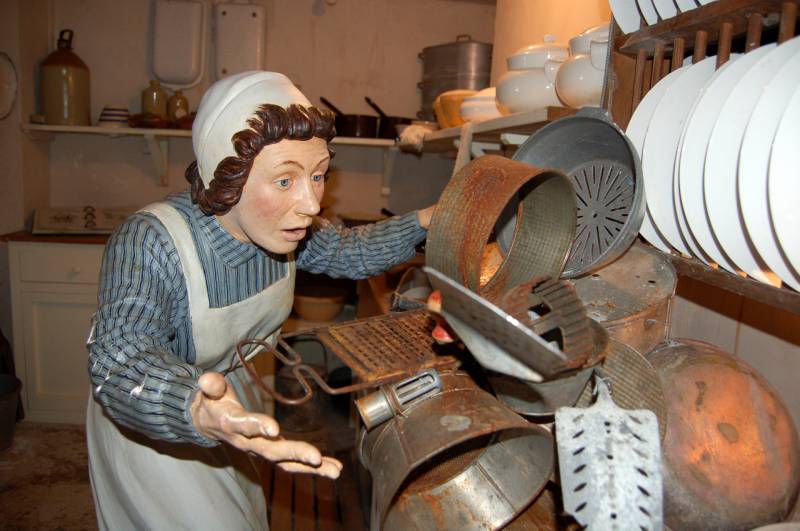

Information